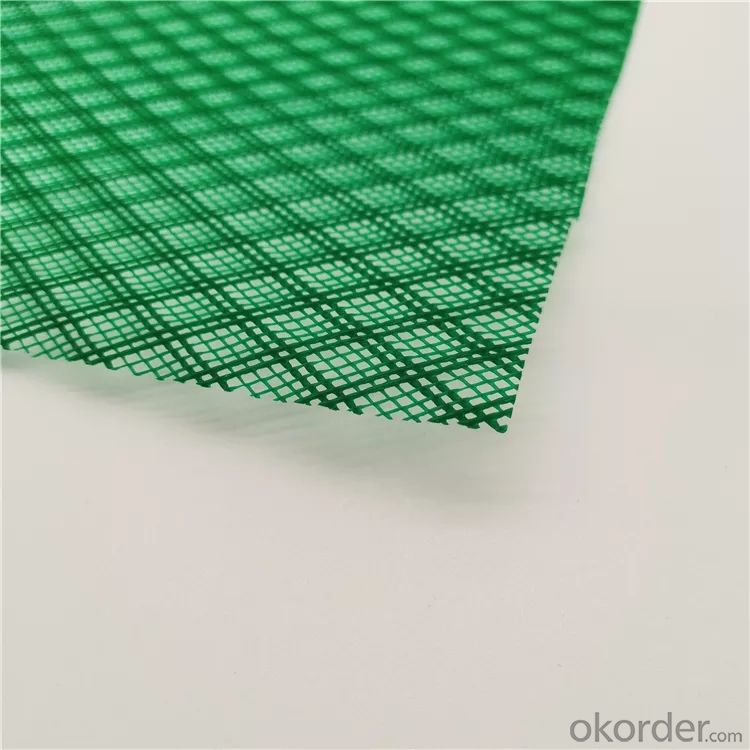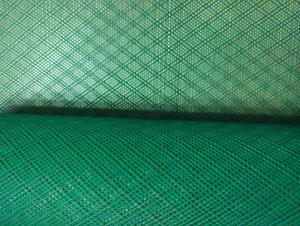Flow Media-vacuum infusion process fiberglass
- Loading Port:
- Shanghai
- Payment Terms:
- TT or LC
- Min Order Qty:
- 500 m²
- Supply Capability:
- 1000000 m²/month
OKorder Service Pledge
OKorder Financial Service
You Might Also Like
Flow Media
Product Description
Flow Media is a kind of resin drainage medium with low cost, which is widely used in vacuum infusion molding process. It can make resin permeate into any part of the products evenly and quickly. According to the different molding technology of products, it can be divided into two types: weaving type and extruding type. It has been proved that, extruding type can make workers easy to tile them without any curl. While regarding the weaving type, it is good for the flowing of air and resin because of its three-dimensional weaving structure. The demoulding effect is good and the cost is lower. Flow media mesh can be cut into any shapes. It is suitable for different shapes of products, with low consumption and good economic performance. It is widely applied to aerospace, wind-power blades, shipbuilding, racing, automotive, sports equipments and such composite manufacture industries.
Technique Data
Material: | PE |
Area Weight: | 110 g/m2 or 230g/m2 |
Width: | 120 cm |
Pattern: | Three-dimensional grid-like |
Temperature resistance: | 120℃ |
Color: | green |
Roll length: | 100 m |

- Q:Is fiberglass fabric resistant to water absorption?
- Fiberglass fabric, being resistant to water absorption, is made by weaving together very fine glass fibers. These fibers have a natural aversion to water, causing them to repel it. Hence, fiberglass fabric possesses an inherent property that makes it highly resistant to absorbing water. Instead of absorbing liquid when exposed to water, the fabric allows it to form beads and roll off the surface. This particular quality of fiberglass fabric makes it perfect for various applications where water resistance is desired, including the manufacturing of boats, shower curtains, and protective clothing. Moreover, the ability of fiberglass fabric to resist water contributes to its durability by preventing the growth of mold and mildew, which could otherwise compromise its integrity.
- Q:Are there any environmental considerations associated with fiberglass fabrics?
- Yes, there are environmental considerations associated with fiberglass fabrics. Fiberglass production requires the extraction of raw materials, such as silica and limestone, which can have negative impacts on ecosystems and local communities. Additionally, the manufacturing process of fiberglass fabrics involves the use of energy-intensive machinery and the release of greenhouse gases. Disposal of fiberglass fabrics can also be problematic as they are not easily biodegradable and can contribute to landfill waste. Therefore, it is important to consider the environmental implications when using or disposing of fiberglass fabrics.
- Q:Is fiberglass fabric resistant to chemicals in wastewater treatment?
- Yes, fiberglass fabric is generally resistant to chemicals in wastewater treatment. Fiberglass is known for its excellent resistance to a wide range of chemicals, including acids, alkalis, solvents, and many other corrosive substances commonly found in wastewater treatment processes. This resistance makes fiberglass fabric an ideal choice for various applications in wastewater treatment, such as filtration, lining tanks, and ductwork. Additionally, fiberglass fabric is also resistant to UV radiation, high temperatures, and mechanical stress, which further enhances its durability and longevity in wastewater treatment environments. However, it is important to note that the specific resistance of fiberglass fabric can vary depending on the type and concentration of chemicals present in the wastewater. Therefore, it is advisable to consult with manufacturers or industry experts to ensure that the chosen fiberglass fabric is suitable for the specific chemical conditions of the wastewater treatment system.
- Q:Can fiberglass fabric be easily cut and sewn?
- Yes, fiberglass fabric can be easily cut and sewn. It is a flexible material that can be trimmed with scissors or a utility knife and sewn using a heavy-duty sewing machine or by hand with a strong needle and thread. However, it is important to take necessary precautions and use appropriate safety measures while working with fiberglass, such as wearing protective gloves and a mask, as the fibers can cause skin irritation and respiratory issues if inhaled.
- Q:What are the main characteristics and differences between CEM-3 high thermal conductivity and aluminum substrate? Which kind of board is more advantageous to make lamps and lanterns?
- The aluminum substrate market is now chaotic, ordinary aluminum substrate thermal conductivity of less than 0.8, of course, genuine aluminum substrate can do 1.0~3.0, but the higher prices.
- Q:Can fiberglass fabric be used for making car seat covers?
- Yes, fiberglass fabric can be used for making car seat covers. It is a durable and lightweight material that can provide added strength and protection to the seats. However, it may require additional padding or upholstery to make it more comfortable for the passengers.
- Q:Can fiberglass fabric be used for insulation in chemical plants?
- Yes, fiberglass fabric can be used for insulation in chemical plants. Fiberglass fabric is known for its excellent thermal insulation properties, making it suitable for various industrial applications, including chemical plants. It is resistant to high temperatures, corrosion, and chemicals, which are common in chemical plant environments. Additionally, fiberglass fabric is lightweight, easy to handle, and can be customized to fit different shapes and sizes, making it an ideal choice for insulating equipment, pipes, and tanks in chemical plants.
- Q:What is the maximum width available for fiberglass fabric rolls?
- The maximum width available for fiberglass fabric rolls can vary, but typically it ranges from 1 meter (39 inches) to 3 meters (118 inches).
- Q:Construction method of organosilicon waterproof coating
- The total coating thickness is above 1.5mm, and the coating interval is 2-12h (depending on the weather condition). 1-2 layers of glass fiber cloth or other matrix material can be added to the coating.
- Q:How is fiberglass fabric used in the aerospace industry?
- Fiberglass fabric is commonly used in the aerospace industry for its lightweight and high-strength properties. It is used to reinforce various components such as aircraft wings, fuselage panels, and interior parts. The fabric is typically impregnated with resin and then molded or laminated to create strong, durable structures. Additionally, fiberglass fabric is also utilized in the production of heat shields and insulation materials to protect against extreme temperatures encountered during space travel.
1. Manufacturer Overview |
|
|---|---|
| Location | |
| Year Established | |
| Annual Output Value | |
| Main Markets | |
| Company Certifications | |
2. Manufacturer Certificates |
|
|---|---|
| a) Certification Name | |
| Range | |
| Reference | |
| Validity Period | |
3. Manufacturer Capability |
|
|---|---|
| a)Trade Capacity | |
| Nearest Port | |
| Export Percentage | |
| No.of Employees in Trade Department | |
| Language Spoken: | |
| b)Factory Information | |
| Factory Size: | |
| No. of Production Lines | |
| Contract Manufacturing | |
| Product Price Range | |
Send your message to us
Flow Media-vacuum infusion process fiberglass
- Loading Port:
- Shanghai
- Payment Terms:
- TT or LC
- Min Order Qty:
- 500 m²
- Supply Capability:
- 1000000 m²/month
OKorder Service Pledge
OKorder Financial Service
Similar products
New products
Hot products
Related keywords





























